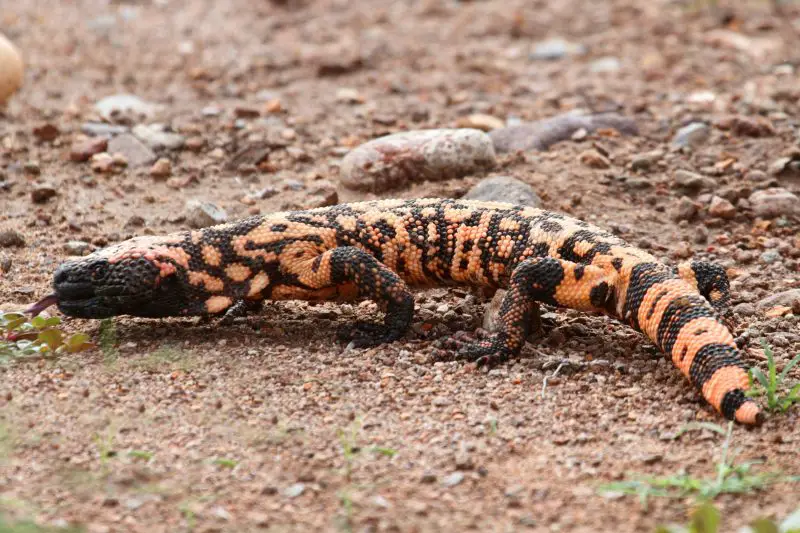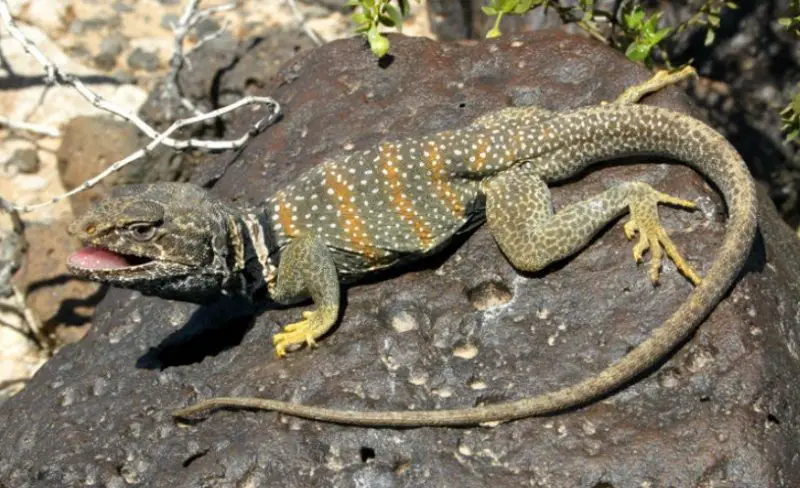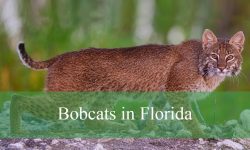Utah’s landscape is a breathtaking mix of red-rock canyons, desert valleys, and rugged mountain terrain. But behind its scenic beauty hides one of the most misunderstood and feared creatures in the American Southwest: the venomous lizard. Though lizards are often harmless, Utah is home to one of the only truly venomous species in North America—the Gila monster—and its presence surprises both locals and tourists alike.
For years, myths and exaggerated tales about venomous lizards have circulated in Utah. Some people believe they can leap onto humans, others think their bite is instantly deadly. The truth, however, is both fascinating and alarming. While encounters are rare, these lizards possess venom capable of causing intense pain and systemic reactions in humans.
In this article, we’ll uncover the shocking truth about venomous lizards in Utah—their biology, habitats, behaviors, and what makes them dangerous. We’ll also share safety tips, myth-busting facts, and how to protect yourself if you ever cross paths with one of these remarkable yet misunderstood reptiles.
Understanding Utah’s Venomous Lizards
Only One True Venomous Species: The Gila Monster

The only naturally venomous lizard native to Utah is the Gila monster (Heloderma suspectum). This striking reptile is easily recognizable by its bead-like orange and black scales arranged in a mosaic pattern. It can grow up to 22 inches long and weigh up to five pounds—making it one of the largest lizards in the United States.
Despite its fearsome reputation, the Gila monster is slow-moving and reclusive. It spends up to 90% of its life underground, emerging mostly in the spring and early summer to hunt, bask, and mate. But when threatened, it can deliver a painful bite loaded with neurotoxic venom designed to immobilize prey.
Where Gila Monsters Live in Utah
Gila monsters are primarily found in southern Utah, especially in Washington County near St. George, the Beaver Dam Mountains, and the Utah-Arizona border. These regions feature warm desert climates and rocky outcrops ideal for burrowing and shelter.
Their range is limited because they require both heat and access to burrows or crevices for protection. In colder northern regions, they cannot survive harsh winters. However, sightings in Utah have slowly increased as warming temperatures expand their potential habitat northward.
What Makes the Gila Monster Dangerous
The Power of Its Venom
The Gila monster’s venom is unlike that of snakes—it’s not injected through hollow fangs. Instead, venom glands are located in the lower jaw, and the lizard chews its venom into the wound through grooves in its teeth. This chewing motion allows venom to seep deeply into tissues, causing pain, swelling, and systemic effects.
The venom contains powerful compounds such as helothermine and gilatoxin, which can:
- Block nerve transmission
- Cause intense burning pain
- Lower blood pressure
- Induce nausea or dizziness
- Lead to localized tissue damage
While the bite is rarely fatal to humans, it can be medically serious—especially for children, elderly individuals, or people with weakened immune systems. Victims often report pain lasting for several hours or even days.
Defensive Behavior
Gila monsters are not aggressive by nature. They rely on warning behaviors before biting, such as:
- Hissing loudly
- Raising their body and opening their mouth
- Swinging their tail and standing tall
They typically bite only when handled or cornered. Once they latch on, however, they are notorious for holding on tightly, making removal painful and difficult.
Myths vs. Facts About Venomous Lizards in Utah
Myth 1: Gila monsters chase people.
Fact: They do not chase or attack humans. Their slow gait and heavy body make them poor runners. If one approaches, it’s usually by coincidence, not aggression.
Myth 2: A Gila monster’s bite is always deadly.
Fact: There are no confirmed human deaths from a Gila monster bite in modern medical records. Pain and illness are common, but fatalities are virtually nonexistent.
Myth 3: You can suck the venom out.
Fact: Never try to suck venom from a wound. This can worsen the injury and introduce infection. Seek medical attention immediately.
Myth 4: Gila monsters jump or leap at prey.
Fact: They cannot jump. Their defense relies on venom, not agility.
Myth 5: All large lizards in Utah are venomous.
Fact: The collared lizard, desert spiny lizard, and whiptail lizard are common in Utah but nonvenomous. They rely on speed and camouflage to evade predators.
Other Lizards Often Mistaken for Venomous
Great Basin Collared Lizard (Crotaphytus bicinctores)

This large, colorful lizard is often mistaken for a Gila monster due to its size and bold markings. However, it’s nonvenomous and completely harmless to humans. Males can be seen basking on rocks throughout southern Utah during the summer.
Desert Spiny Lizard (Sceloporus magister)

Covered in rough scales and displaying a bluish underside, this lizard can look intimidating, but it’s a harmless insect-eater. It prefers rocky habitats and often darts away when approached.
Zebra-tailed Lizard (Callisaurus draconoides)

Named for the striking black-and-white bands on its tail, this fast desert runner is often spotted near sandy washes. It uses tail displays to confuse predators but poses zero threat to humans.
The Hidden Dangers of Venomous Lizards in Utah
1. Severe Pain and Medical Complications
The bite of a Gila monster causes immediate and intense pain that spreads rapidly. Victims may experience swelling, bleeding, vomiting, and dizziness. Although not lethal, the pain can be severe enough to require hospitalization. Some patients experience low blood pressure and shock-like symptoms.
2. Risk to Pets and Wildlife
Dogs and cats are naturally curious and may attempt to play with or attack a Gila monster. In doing so, they risk painful bites and venom exposure. Gila monsters are protected by law, so killing or harming one—even accidentally—can lead to fines or prosecution.
3. Illegal Pet Trade and Human Danger
Another hidden threat involves illegal wildlife trafficking. Gila monsters are sometimes captured and sold as exotic pets despite being protected under Utah state law and the Endangered Species Act. Handling them is not only dangerous but also illegal.
4. Expanding Range and Climate Change
As Utah’s desert regions warm, Gila monsters are expected to expand their territory northward. This means potential encounters in areas that historically never saw venomous lizards, increasing public risk and misunderstanding.
What to Do If You Encounter a Gila Monster
Stay Calm and Keep Your Distance
Never attempt to pick up or move a Gila monster. Maintain at least six feet of distance and observe it quietly. These lizards will usually move away on their own once they feel unthreatened.
Report Sightings
If you encounter a Gila monster in Utah, contact the Utah Division of Wildlife Resources (DWR). They track sightings to monitor population health and protect the species.
If Bitten
- Do not panic. Stay calm to reduce venom circulation.
- Do not try to remove the lizard by force. Gently submerge its body in water if possible—it may release its grip naturally.
- Keep the affected limb immobilized and below heart level.
- Do not cut, suck, or apply ice directly to the wound.
- Seek immediate medical attention. Antivenom is not typically required but medical monitoring is essential.
The Role of Gila Monsters in Utah’s Ecosystem
Despite their reputation, Gila monsters play a critical ecological role. They control rodent and small bird populations, reducing crop and garden pests. Their burrowing also aerates soil and provides shelter for other desert animals like snakes and insects.
Removing Gila monsters from the environment disrupts this balance. For that reason, they are legally protected, and it is illegal to harm, capture, or sell them in Utah.
How to Stay Safe in Lizard Country
Hiking and Outdoor Safety
- Always watch where you step when hiking in southern Utah’s deserts.
- Avoid reaching under rocks or into crevices without looking first.
- Wear boots and long pants in rocky or scrubby areas.
- Keep pets on a leash during hikes.
Around the Home
- Keep yards clean of debris and rocks where lizards can hide.
- Seal openings under sheds and porches.
- Store pet food indoors to avoid attracting rodents (which attract lizards).
Educational Awareness
Teaching children to respect wildlife is key. Gila monsters are not monsters—they’re ancient reptiles that deserve protection and caution, not fear.
Venom Research: From Danger to Medicine
Ironically, the venom that once terrified humans has led to lifesaving medical discoveries. Scientists have developed a drug called exenatide, derived from Gila monster venom, which helps treat type 2 diabetes by regulating blood sugar levels. This breakthrough highlights how even dangerous animals can contribute positively to science and health.
Researchers continue to study the venom’s unique proteins for potential treatments for Alzheimer’s and obesity. So while their bite may be painful, their biology offers hope for the future of medicine.
FAQs About Venomous Lizards in Utah
Are there any venomous lizards in Utah?
Yes, Utah is home to the Gila monster, the only venomous lizard species native to the state. It resides mainly in the southwestern deserts near the Arizona border.
Can a Gila monster kill you?
No, its bite is extremely painful but not fatal. Medical care is recommended to manage pain and prevent infection.
Are Gila monsters protected in Utah?
Yes. They are a protected species under both state and federal law. It’s illegal to capture, kill, or harass them.
How common are Gila monster sightings in Utah?
Sightings are rare but increasing near St. George and the Beaver Dam Mountains due to habitat expansion and warmer temperatures.
What should I do if my pet is bitten?
Take your pet to the nearest veterinarian immediately. Provide details about the encounter for appropriate treatment.
Do Gila monsters climb or jump?
They cannot jump but can climb low rocks and shrubs. They move slowly and usually pose no threat unless provoked.
Is it safe to keep a Gila monster as a pet?
No. It’s illegal and highly dangerous. Their venom and temperament make them unsuitable for captivity.
Conclusion
The truth about venomous lizards in Utah is both shocking and fascinating. The Gila monster is a relic of prehistoric times, a creature perfectly adapted to the harsh desert yet deeply misunderstood by humans. While its venom can cause intense pain, it’s rarely deadly—and in many ways, this lizard plays an essential role in balancing Utah’s fragile desert ecosystem.
Respect, not fear, is the key to coexistence. If you live or hike in Utah’s southern deserts, stay alert, observe from a distance, and appreciate these rare reptiles from afar. Understanding their behavior and biology transforms fear into fascination—and ensures that future generations can continue to marvel at one of Utah’s most mysterious desert dwellers.






